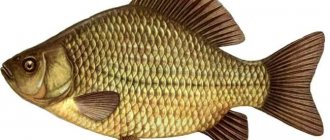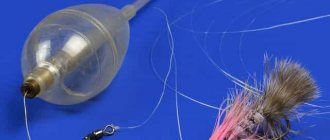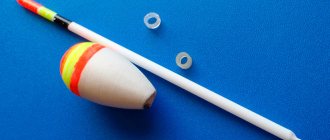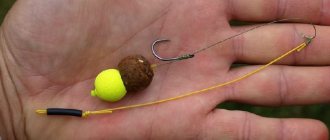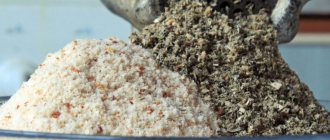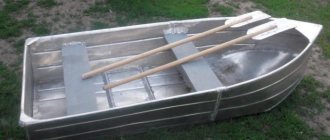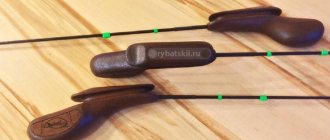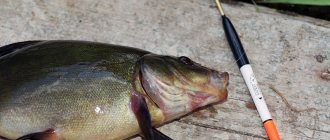What types of floats are there?
Each float has three main components:
- antenna – upper, surface part;
- body;
- keel – strictly underwater part.
Body Shapes:
- needle;
- spindle;
- drop, inverted drop;
- barrel;
- sphere, ball.
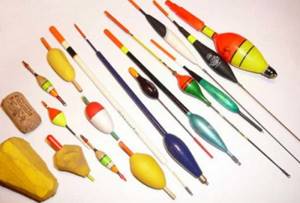
Attaching to the fishing line occurs:
- at one point;
- at two points.
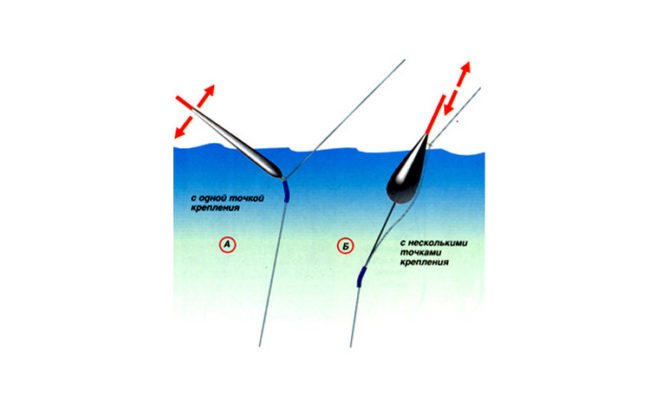
Based on the method of attachment to the fishing line, there are:
- blind (rigid) fastening, in which the float is rigidly fixed and cannot independently move along the fishing line. Used when the fishing depth is not greater than the length of the rod;
- a sliding mount in which the float can move along the line to the level of the stopper.
Other characteristics of floats that must be taken into account when choosing (average values are used, in particular cases variations are possible):
| Purpose | Weight | Loading |
| Casting up to 5 meters, calm (needle, spindle, drop) | up to 3 grams | up to 4 grams |
| Long cast, calm (spindle, drop) | 3-8 grams | 4-6 grams |
| Windy weather, current (sphere, disk) | about 10 grams | 4-10 grams |
Where to catch crucian carp on a float
The advantage over feeder and bottom equipment is its wide range of applications. You can fish with a float rod in various conditions:
- rivers with slow and moderate currents;
- jet (for demolition or wiring);
- standing bodies of water: ponds and lakes;
- reservoir (from boat and shore);
- sea (from the pier or beach).
Float equipment is perfectly adapted to any body of water, so it can safely be called universal. You need to start searching for crucian carp at the edge of the reeds. A small portion of pre-prepared complementary food will attract and keep the fish on the spot. In artificial reservoirs, old maps will help you find prey. If you have a boat and knowledge about the flooded lake, the chances of success increase. Crucian carp is found more often in such places.
River fish are more active due to the current, but following the example of lake species, they prefer to stay in their homes. Fishing takes place while fishing. Floats for searching and catching crucian carp are used in the light class, because the bites are more delicate in the current.
To learn more:
Advantages of a Kevlar leash for pike
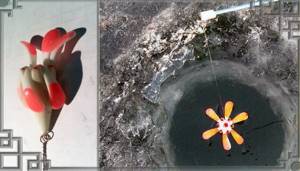
Choice depending on the reservoir
Every float has dynamic sensitivity. This is the ratio of its weight, volume and carrying capacity. Floats of the same weight and load, but different in volume, will have different sensitivity. For example, if we compare a “spindle” and a “ball” of equal mass, then, of course, the “spindle” will be more sensitive.
In still water
In still water or in calm weather, in calm conditions, a float with a “needle” shape or an elongated “spindle” . It senses minimal bites and offers virtually no resistance when moving in the water, so the bite is simply visible.
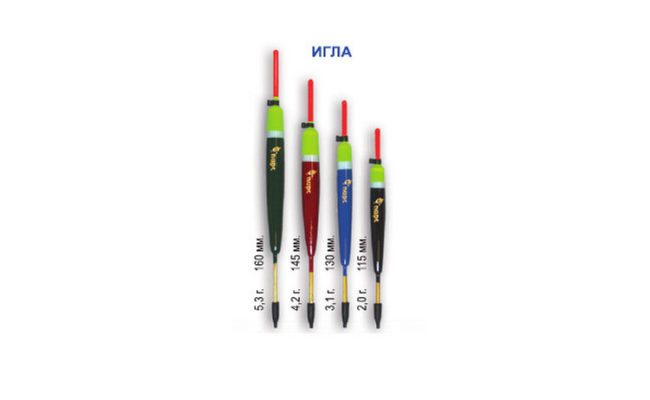
Float "needle"
On the current
When you have to fish in the current, the float:
- does not stand in one place, moves;
- is not located vertically upward, but at an angle;
- The antenna constantly sways on the water, creating the appearance of a bite.
In this case, floats are used:
- other form;
- other weight;
- different load capacity than when fishing in still water.
If the current is slow, you can take a float with a “reverse drop” or “sphere” , with a load capacity of up to 10 grams. Flat bite alarms have also proven themselves very well.
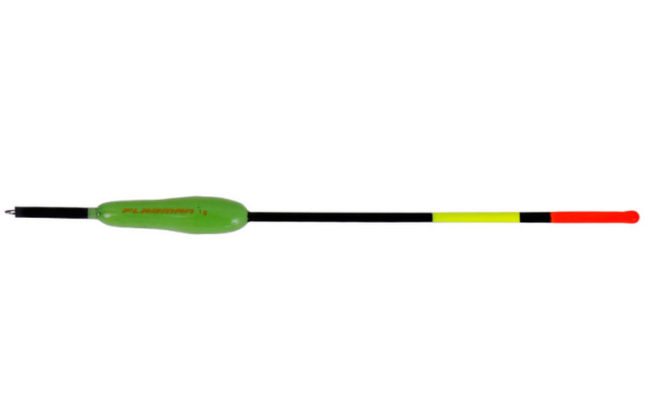
Reverse drop float
Their highlight is that they:
- are positioned edge-on to the flow, i.e. have minimal resistance;
- fixed at an angle to the keel, respectively, the antenna stands vertically upward.
Video: choosing a float for current, still water and long casting
Criterias of choice
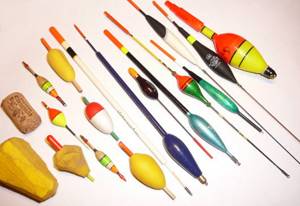
Crucian carp bite confidently and reliably only in early spring. The rest of the time, this fish is extremely careful. Therefore, the main requirement for a signaling device is sensitivity. This indicator can be achieved with proper loading. But most high-quality, factory-made bite indicators initially have increased sensitivity (for example, floats for fly fishing).
For catching crucian carp at short distances, floats with 2 or 3 attachment points to the main line are better suited, as they are more sensitive compared to alarms with only one attachment point.
However, bite indicators with 1 attachment point are indispensable when the depth at the fishing point is greater than the length of the rod.
The following floats are suitable for fishing in calm water:
- Needle-shaped (spindle-shaped).
- With a short keel and a teardrop-shaped or spherical body.
- With a long antenna , an olive-shaped body and a short metal body (wagler), which is used in match gear for catching crucian carp at long distances.
On reservoirs with a current, the shape of the body of the bite indicator is not particularly important. What is important, first of all, is the keel, which is responsible for the stability of this bite alarm in the current.
In all cases, there is one requirement for the antenna - in all cases it must be noticeable.
For different gear
We should not forget that the use of different types of fishing rods also involves the use of different types of float tackle.
| Type of tackle | Purpose of the gear | Float rest |
| Swing rod or swing | short and medium distances, shallow depth (up to 2/3 of the fishing rod length) | “spindle”, “drop”, “reverse drop”, “needle” with one or two attachment points. Weight up to 3 grams |
| Match trotting | short and medium distances with moderate currents | elongated fusiform with a short antenna and long keel, with two attachment points |
| Long-range match | medium and long distances in reservoirs of any type | needle-like, spindle-shaped with one attachment point |
| Bolognese fishing rod | for distances of 15-30 meters | “spindle”, “drop”, “reverse drop” with two attachment points, long keel and antenna. For Fast Flow - Flat Body Petal-Like Guitar Pick |
| Plug tackle | for a distance of 14-18 meters | flat with two attachment points. |
How to make the right choice
Based on the above information, when choosing, you should be guided by the following categories .
- In windy weather, it is better to choose a heavier float (at least 5 grams).
- For calm and windless weather, it is better to choose one that is not so heavy in weight (1 - 3 grams).
- During long casts , the floats must be at least 10 grams.
- Professionals recommend using collapsible tops and different colors of tops . This is suitable for different types of water surface (red and black tops are better visible on a white surface and vice versa).
- Also, the top should be at least 3 cm , and the thinner the better. But there can be as many fastenings as you like.
How to choose a float
Sliding float
The advantages are the ability to catch:
- at a significant depth - up to 6-7 meters;
- at a distance of up to 30 meters from the shore;
- in “windows” among vegetation;
- moving along the shore.
A sliding float for long casting must be heavy enough so that the tackle can be cast the required distance. Body shape "spindle" or "drop" .
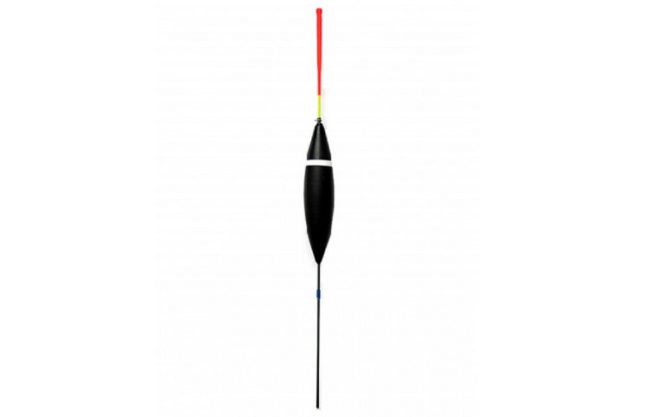
Float "spindle"
Loading capacity of crucian carp float

Depending on the fishing methods, the operating weight of the float is selected. Floats with a relatively large weight are used if:
- There is a strong wind.
- In deep water places.
- When using long casts.
As a rule, these are floats with an operating weight of 5 g and above. They are excellent for the above conditions. If the conditions are more favorable, namely:
- No wind.
- Fishing at depths up to 1.5 meters.
- Casts to a distance of no more than 10 meters.
For such cases, you should choose a float with a weight of up to 5 g.
The most sensitive
Crucian carp is very careful, so the float for crucian carp fishing must be chosen as sensitive as possible so that the slightest bite is noticeable.
The sensitivity of a bite detector is made up of a combination of the following components:
- weight;
- antenna diameter;
- body shape;
- carrying capacity (load).
The following factors are added:
- weather conditions (calm, wind);
- properties of the reservoir (flow, standing water);
- fishing depth;
- type of fishing rod.
According to the general opinion of fishermen, the most sensitive is the “goose feather” . Lightweight, almost weightless, capable of responding to the slightest bite. However, they are good at fishing in complete calm. At the slightest wave, the float begins to “play”, so it is impossible to make out whether there was a bite or not.
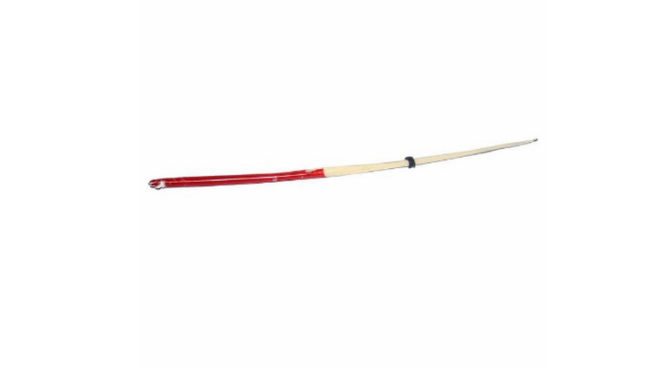
Float "goose feather"
Optimal float color
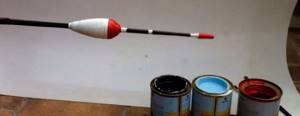
The color of the float is equally important for both the fish and the angler. The float, conditionally, can be divided into 2 parts: one part is under water, and the other is above water. The part that is under water should be quite noticeable, otherwise it will not be possible to notice the crucian bite in time.
- If fishing is carried out in cloudy weather, then it is better to use floats with a white or light green antenna.
- When fishing in clear sunny weather, black or red tips are suitable.
The underwater part of the float should not contrast in the water column so as not to alert the fish.
DIY float for crucian carp
You can make your own bite alarm for crucian carp from the following materials:
- bird feather;
- plastic straws;
- Styrofoam;
- tree;
- crust
The easiest way is to make a float from a feather . The whole procedure takes just a few minutes and consists of the following steps:
- clean the feather from fluff;
- shorten if necessary;
- paint (nail polish will do) in a bright, noticeable color;
- put nipples on the feather for fastening to the fishing line.
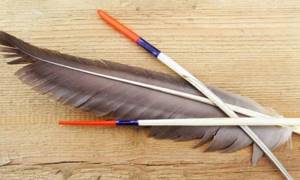
From a plastic tube:
- cut a piece of the required size from the tube;
- solder the ends of the tube to seal;
- paint;
- attach to the fishing line in the same way as a feather float.
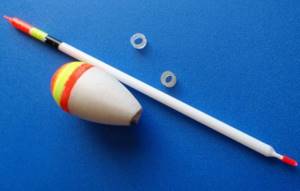
Made of foam or cork. The manufacturing technology in this case will not differ in any way.
Attention! Use high density foam.
Manufacturing stages:
- make a float body blank;
- sand until smooth (you can use a drill);
- clean from dust, paint;
- drill a hole for the keel antenna (feather spine; tube; bamboo skewer, etc.);
- insert the axle (the holes can be sealed with silicone);
- paint the assembled float, open it with varnish (it would be correct to do double varnishing, drying each layer for at least 12 hours);
- put on the nipples for fastening.
Conditions for catching crucian carp
three types of crucian carp :
- Golden (or common crucian carp);
- Goldfish ;
- Artificially bred breed - Goldfish (telescope, lionfish, comet, etc.).
The first two individuals are found in stagnant waters , although silver crucian carp can be found more often, since this individual can also be found in flowing water .
It is necessary to catch crucian carp only in the warm season , since in winter it hibernates. The best period is the beginning of May . Remember that crucian carp most often lives at the bottom of reservoirs , looking for food in the silt (plankton, insect larvae, as well as a wide variety of vegetation). Therefore, worms, maggots or bloodworms are best suited for bait For bait you can use millet, crackers, cake, pearl barley porridge, rolled oat porridge, as well as bran and oatmeal.
Equipment for a float rod for crucian carp - what should it be? Video
The behavior of this fish is generally predictable . It is often found in the coastal zone, choosing silted and overgrown places. This fish is not large.
Catching it with a fishing rod is quite exciting. Moreover, it will be equally interesting to amateur and professional fishermen.
Crucian carp are quite cautious and capricious in their choice of bait. It is found only in certain places that he has chosen as his “home” and “kitchen”. But sometimes finding such a place is not as easy as it seems at first glance. Therefore, the equipment of a float rod for crucian carp must be appropriate, because you will be spending a long time with it.
Crucian bite
The bite of this fish can be very varied . Sometimes the crucian carp sinks the float right away, sometimes it lifts the bait and places the float on the surface of the water surface.
Often he tries the bait, and then spits it out and the float above the surface of the water only trembles. Calculating the moment when to make a hook can certainly be difficult.
Moreover, if the fish does not take the bait confidently, but as if it is deliberately teasing the fisherman.
Hooks can sometimes be empty, or the fish comes off the hook. It happens that fishermen make too sharp a hook, this can lead to a tear in the lips of the crucian carp. They are weak for him. It will not be possible to pull the fish out of the water in one fell swoop; the crucian carp also breaks away with torn lips. Therefore, you should pull up the hooked crucian carp carefully and smoothly, without making sudden movements.
How to equip?
In order for the catch to be of high quality , you will need the following equipment for a float rod for crucian carp. First of all, the float must be sensitive.
For these purposes, you can use sports floats that belong to the bleak class. But “sports” does not mean that it is used only by athletes, it is simply a float that is attached to the fishing line in at least two places.
And its surface body is a thin antenna pin, and it is of small volume.
Thanks to this float, the fishing rod becomes a sensitive tool for catching crucian carp. Many fishermen use floats with a thick antenna, and they are also attached to one lower point of the rod. Such floats are not suitable for hunting crucian carp. They create not entirely comfortable conditions for the fish. This is expressed in increased resistance for fish during biting.
The resistance corresponds to the buoyancy of the thick antenna, and when you start to sink the float, the fish senses it, becomes alert, and then spits out the bait. When hooking occurs and you remove the recessed float attached to the lower part of the rod, the float in the water overturns, this creates resistance. The hooking occurs noisily and with a splash, which is not correct.
The loading of the float also plays a significant role . One of the components of the shipment is the sub-supply - this is the lowest weight. It is located near the hook.
It is the shed that acts here as an anchor, which prevents the equipment from floating away under the influence of current or wind. The weight of this weight can be different, it all depends on the presence of water movement, weather conditions, the thickness of the fishing line, the shape of the float and other factors.
But it is better, of course, to do without a shed, or to reduce its mass to a minimum.
The main load is located on the line above. It is shaped like an olive or several pellets. Its mass is selected so that it slightly drowns the main floating body near the float.
If the backup does exist, then it should sink the other part of the float to the point where only the top of the thin antenna appears above the water.
But the equipment must be in place; if it is constantly blown away, then it is not a bait for crucian carp.
As a fishing method, we can recommend slowly sinking bait . Then the equipment is made like this: 5 or even 10 pellets should evenly load the line from the hook to the float. This method will be effective if the crucian carp walks in a school and the fish rushes to the sinking food.
In calm weather, the equipment of a float rod for crucian carp can be like this. You need to move the lowest pellet away from the hook by twenty to thirty centimeters.
It turns out that the nozzle is located almost at the bottom, and the shipment hangs on the fishing line. But there is one nuance here, namely, the bite will not be visible when rising.
But if the fish is large, then you will feel that it has bitten even without a visual cue.
Without float and sinker
You can catch crucian carp this way. To do this, you will need fishing line, colored so that it is visible on the surface of the water. Crucian carp, by the way, is more willing to take a bait that does not have a float or weights.
But fishing this way can only be done in calm weather, as well as in quiet and overgrown lakes, where there is practically no current. The rod should be light.
You will see that the fish has been hooked by the fishing line moving to the side, or you will feel it by the vibration of the rod.
Which fishing rods should you choose?
Some fishermen equip their fishing rod with a reel. not the best option for hunting crucian carp . Even if you come across a large specimen, you can reel it in with a regular fly fishing rod without a reel. Without it, the tackle does not weigh as much, and the number of unnecessary hooks is reduced. You will have to fish in overgrown areas, so it will be more profitable to use a rod without rings.
You can catch crucian carp with short fiberglass rods . These fishing rods are durable, you don’t have to worry about them breaking when hitting various snags or tree branches. But if you have chosen a five-meter long fishing rod, then it is better to take a carbon fiber fishing rod. This is light tackle, but also more fragile.
The rod should be able to withstand 7 – 10 kilograms, no more is needed. The fishing line should be used to match the color of the pond. For example, it is better to take a light blue line to a river, a brownish-yellowish line to a swamp, and a line with a blue-green tint to a lake. A fishing line of 0.2 millimeters is usually used for crucian carp.
The hook should be matched to the bait . Hook sizes range from 12 to 8, the shape of the sting is determined depending on the bait.
If these are worms, bloodworms, maggots, flies, then you can use a hook with a long and straight sting, which must be sharpened.
If you use plant foods - dough, corn, peas - then you should take hooks with curved and loose points. The bait is attached to the very tip, and the sting should be completely hidden.
Where to look for crucian carp?
It is best where the bottom is muddy . If there are stones or sand at the bottom, it is not there. Crucian carp does not like too dense thickets of reeds.
There is nowhere for him to turn around, and there is no necessary food at the bottom. Crucian carp also prefers shallow water, where the depth can be from 0.5 to one and a half meters.
In shallow reservoirs it can move throughout the entire reservoir, and approaches the shore almost everywhere.
If you don't know a body of water, you should research it first. If you see splashes on the surface of the water, moving or trembling stems of reeds or other vegetation, then most likely crucian carp lives there. Very often, fish are found in hard-to-reach places, for example, among thickets of water lilies, in remote nooks.
The lakes where crucian carp live are reservoirs with overgrown shores ; there is practically no access to clean water there. You can fish here either from a boat or in a special suit.
You should approach the place where the crucian carp swims carefully, without making noise, so as not to scare the fish. You should not touch snags and algae that come across your path, this may also scare away the crucian carp. Most likely, it was there that he chose a hiding place.
To reduce the number of hooks to nothing , it is better to equip the fishing rod for crucian carp with a jig. It replaces both the lower pad and the hook. The jig should not be very large, but it can be any shape. Breaks are inevitable, so it’s worth taking cheap jigs, preferably dark in color. When catching crucian carp, the main thing is not the casting range, but its accuracy, as well as timely hooking.
Float rod for crucian carp. Video
Source: https://lovisam.net/snasti/poplav-snasti/osnastka-poplavochnoj-udochki-na-karasya.html
Prices and where to buy?
You can buy a crucian float at any fishing store. To do this, the main thing is to know in what conditions the fishing will take place and, based on this information, choose the most suitable float in terms of body shape, weight and color, as described above.
The cost of the alarm depends on the quality of its manufacture and the popularity of the brand that manufactured it:
- Cheap Chinese-made floats will cost no more than 100 rubles.
- Floats of such brands as “Colmic”, “Drennan”, “SENSAS” will cost about 150-200 rubles.
- Specialized match alarms (wagglers) with replaceable antennas will cost at least 400-500 rubles. a piece.
Loading the float
Crucian carp is cautious and senses the slightest resistance to complementary feeding. To prevent the fish from falling off the bait, it is necessary to properly load the fish. Sinker material – metal or plastic.
For a light float
Using a light bite alarm is possible in calm water. The total weight of the weights is 2-4 g. The pellets are tied evenly every 15 cm, counting starts from the hook. The heaviest pellets are attached higher up the line. When properly loaded, only the antenna protrudes above the water.
For a heavy float
The method of installing pellets on a large bite alarm is the same as for a light one, but the total weight of the weights reaches 10 g. Round pellets are used. Part of the weight is fixed near the bite alarm. Check that the loading is correct by pressing the antenna - the alarm should immediately jump out of the water.
How does a float affect casting distance?
When it comes to crucian carp, there are two types of fishing rods : without a reel, and a long-casting fishing rod. And when fishing with a fishing rod without a reel , especially from a boat or from a platform (usually the distance is 4–5 meters), then a heavy float is not needed . In this case, silence and concentration are needed. But over long distances , the rod should have guides and the float should weigh no more than 8 grams. In this case, at long distances the fish is not so timid and does not run away from the slightest splash.
The top of the float should be thin, with a slight flare at the end. The color of the top should stand out against the background of the water surface , so that it is more convenient for the fisherman to observe the bite.
In this case, you can use special designs that have a loaded lower part. This will allow you to throw the bait where you need it.
Floats for long casting
Types of floats
It is also worth noting that today there are quite a lot of varieties of floats. Often the type of float on a fishing rod depends on the equipment.
For example, it could be a float for fishing rods with or without a reel, with or without rings on the fishing rod. Each type of float has its own characteristics, which are inherent in a certain type of fishing.
Float for fishing rod without reel
This type of float is very suitable for quiet and peaceful fishing. It is noteworthy that it is more convenient to use such equipment from the shore in calm water, preferably on a pond or lake. Typically, such floats have long shapes and are extended upward. Sometimes they can be equipped with a luminous tip for night fishing.
Float for fishing rods with long casting
For rods with a massive reel used for long casts, it is most convenient to use floats special for this purpose. Their weight varies from 5 to 8 grams; they must have an elongated barrel shape with a slight rounding at the top. It helps relieve eye strain while watching for a bite, and it’s also very convenient to monitor this type of float.
